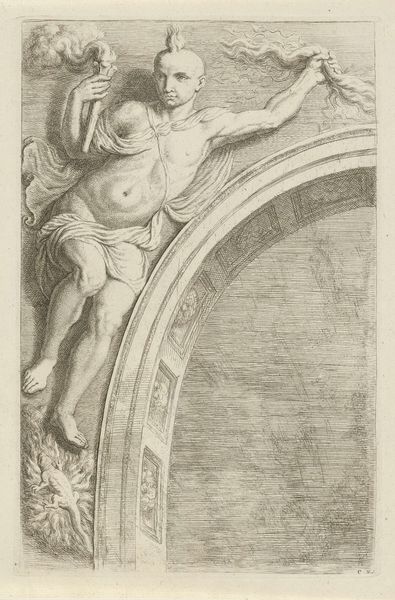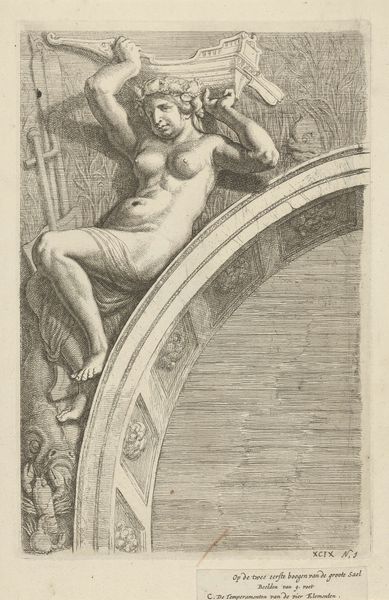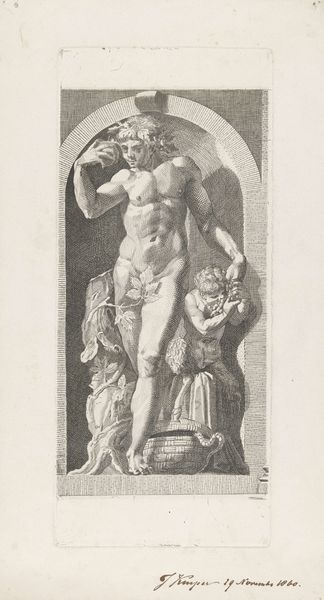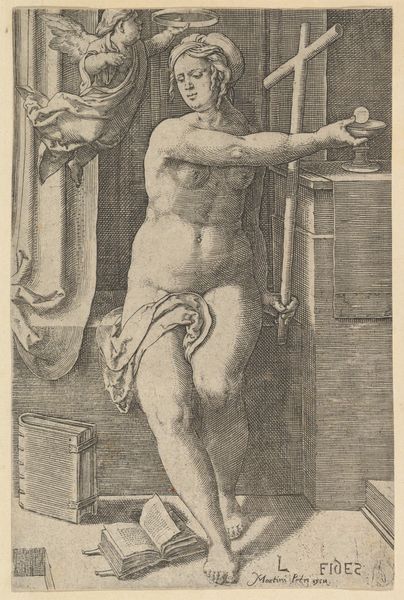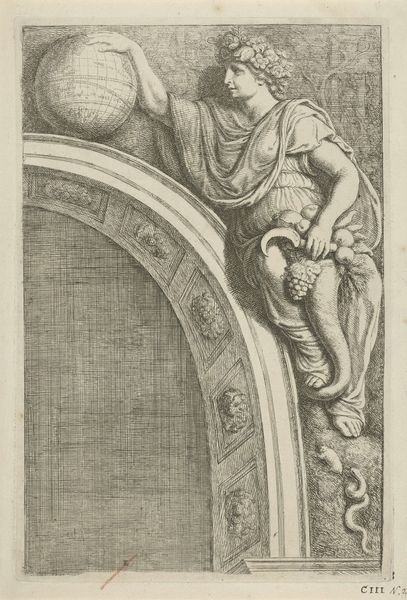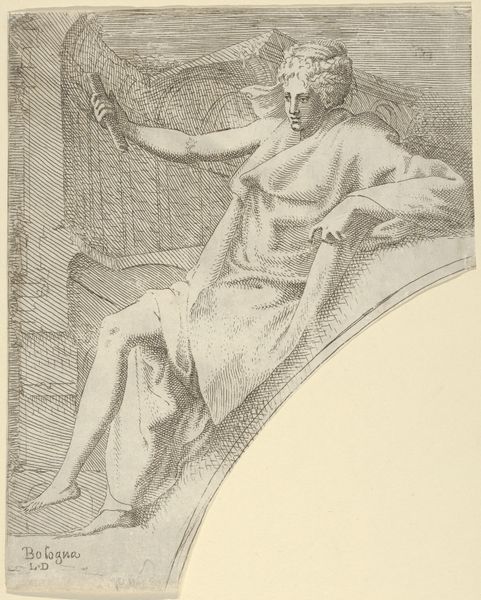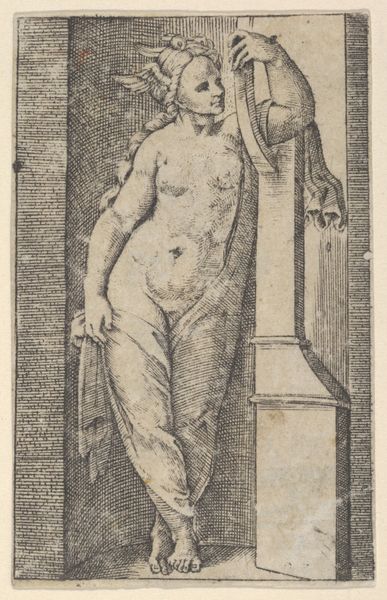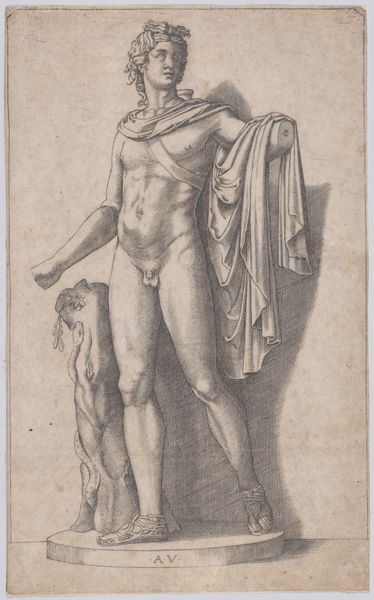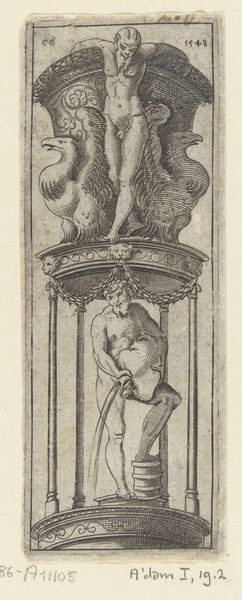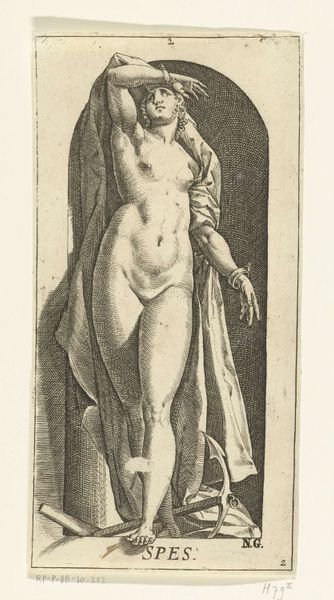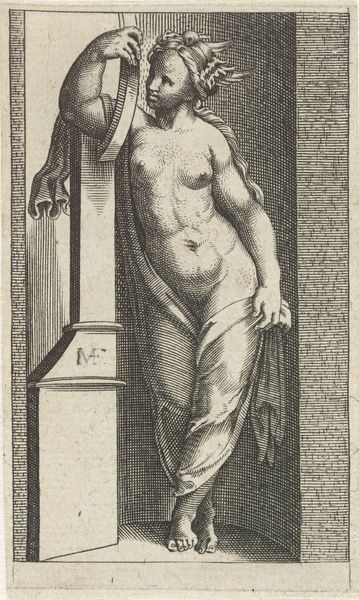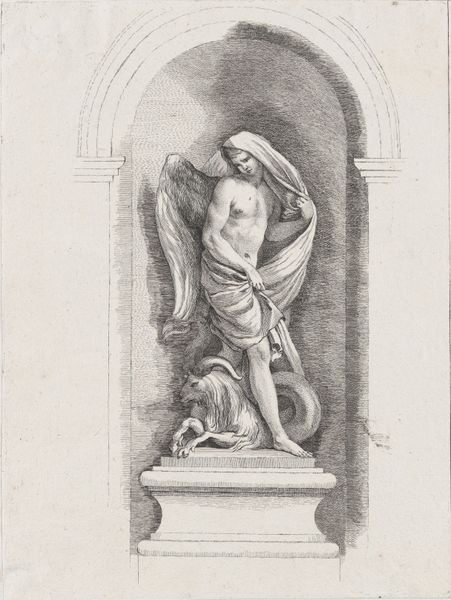
Reliëf met personificatie van het element Lucht boven boog aan westzijde van de Burgerzaal in het Stadhuis op de Dam 1663 - 1783
0:00
0:00
relief, engraving
#
portrait
#
baroque
#
relief
#
classical-realism
#
figuration
#
pencil drawing
#
history-painting
#
engraving
Dimensions: height 323 mm, width 213 mm
Copyright: Rijks Museum: Open Domain
Editor: This is "Relief with personification of the element Air above arch on the west side of the Citizen's Hall in the Town Hall on the Dam", dating from 1663 to 1783, by Hubert Quellinus, currently housed in the Rijksmuseum. It's a relief, classical-realism with Baroque touches; the engraving feels so ethereal. How do you interpret its significance within the context of the Burgerzaal, or Citizen's Hall? Curator: It's intriguing, isn't it? The Citizen's Hall, a public space, would have been consciously designed to project ideals about civic virtue and Amsterdam's role in the world. Quellinus, by depicting Air as a Greco-Roman figure, participates in a broader European trend where classical imagery was appropriated to legitimize power. What strikes you about the figure's pose and attributes? Editor: She looks... commanding, even though partially draped. She's holding what appears to be a lizard, and is that a peacock next to her? Curator: Precisely. Both are associated with air. Consider that during the Dutch Golden Age, Amsterdam was a major commercial power, deeply reliant on naval trade, navigating the very air and winds represented here. This isn't merely decorative; it’s a claim to dominion over global networks facilitated by air and wind, presented as a divine right made accessible by good governance. How do you think audiences might have reacted to such imagery at the time? Editor: I guess they saw themselves in that figure, as participants of something bigger? It is like classical art, re-purposed for propaganda. Curator: Precisely. Understanding this piece reveals how art actively shapes and reflects power dynamics, rather than existing in isolation. What began as an aesthetic observation now informs us about Amsterdam's social and political ambitions. Editor: I didn't see the peacock and lizard connecting so directly to Dutch maritime power at first glance! Curator: Exactly. Looking closely allows one to deconstruct the messaging employed at the time!
Comments
No comments
Be the first to comment and join the conversation on the ultimate creative platform.
